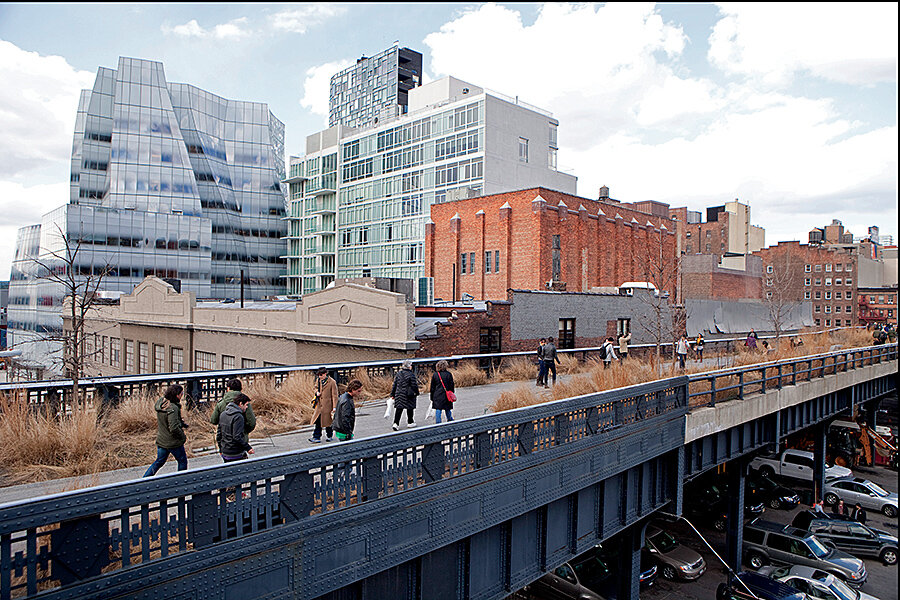Opportunity, hope, and urban cool
Loading...
Cities are born in optimism. Their founders stroke their chins and decide that a particular spot is promising because it features a snug harbor or abundant ground water or sits at the confluence of navigable rivers. Settlers arrive. They trade, farm, fish, build. More come, selling shovels and pies, chop suey and lace curtains. Still more bring art and music, invention and sport. Soon, everybody is talking about how cool the city is even if they’ve forgotten its original advantages.
But new technology, economic gales, neglect, and bad PR can tarnish coolness. Cities can slump. Politicians and planners have always dreamed up schemes to forestall that. In the 20th century, the opposite poles of urban theory were represented by New York master builder Robert Moses and his new-urbanist nemesis, Jane Jacobs.
Moses practiced urban renewal by fiat and bulldozer, carving out highways and erecting bridges that changed the face of New York City but wrecked old neighborhoods. Jacobs advocated a people-scale approach, trusting that if communities were walkable and diverse – if shops, light industry, and housing could coexist – a city would renew itself organically. Her campaign to save Greenwich Village turned the tide in the urbanism battle. A Moses-style megaproject is a rarity these day.
But like any big personality, Moses deserves grudging respect. He refitted Gotham for its postwar run as the planet’s imperial city. Here’s the better lesson, though: Human ingenuity didn’t stop with either urbanist. Moses’s West Side Elevated Highway was a bad idea, but the remnants now include High Line Park, the aerial greenway that has humanized New York’s West Side. Meanwhile, hipster neighborhoods (Brooklyn, for instance) and Jacobs-inspired new towns (Celebration, Fla., for instance) are smart and practical, but at times they can seem exclusive and artificial.
That is OK, too. Cities are communities. People are drawn to them by opportunity and by other people. The spirit of St. Louis, Baltimore, Cleveland, and Detroit – cities once rising, then struggling – is today being rediscovered by a new generation that values high ceilings, big windows, and low prices, that turns vacant lots into farmers markets and old factories into innovation incubators. Opportunity begets coolness. Stephanie Hanes’s cover story (click here to read it) captures that true spirit of urban renewal.
The most optimistic urbanist I ever met was Mitri Naamar, mayor of Beirut, Lebanon, during the civil war of the 1970s and ’80s. His city had been torn apart. He shuttled among six offices to stay safe. But he felt safe. Amid all the city-devouring conflict, he was sure its inhabitants loved the place. Jasmine still bloomed, cafe society ached to return. “There’s always a bright side, even to these current problems,” he said as his city endured a siege in the summer of 1982. Awful as the war was, he said, there would be opportunity when the guns fell silent. The old downtown would be reimagined.
Beirut came back, even if it is a fragile comeback. Cities are born and reborn because people have hope – in the future and in each other.
John Yemma is editor-at-large of the Monitor. He can be reached at yemma@csmonitor.com.
Correction: An earlier version of this column incorrectly included Columbia, Md., as a Jacobs-inspired community.








